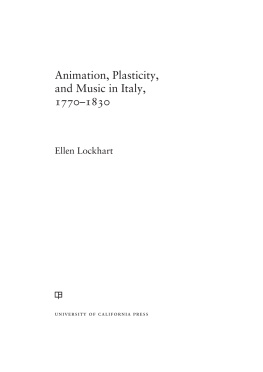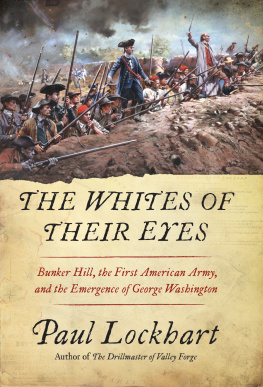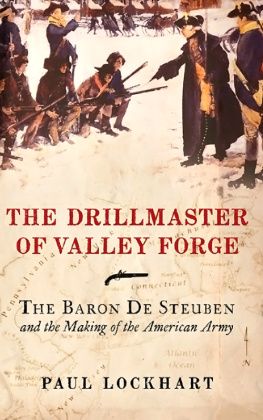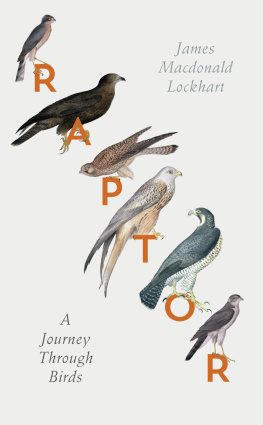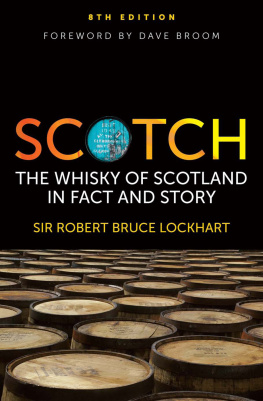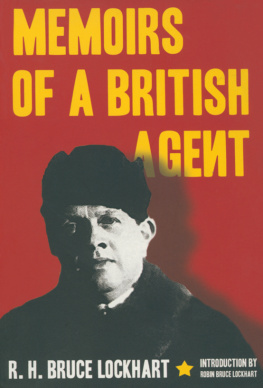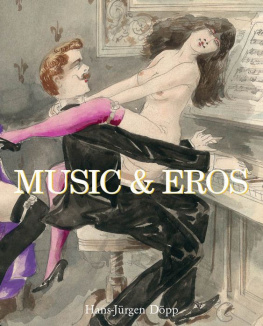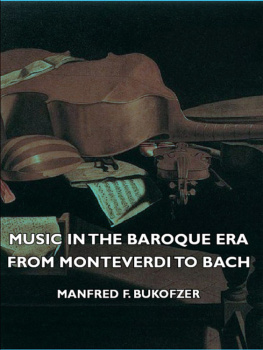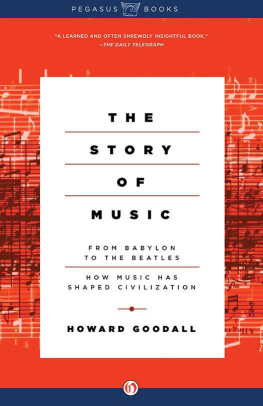Lockhart - Animation, Plasticity, and Music in Italy, 1770-1830
Here you can read online Lockhart - Animation, Plasticity, and Music in Italy, 1770-1830 full text of the book (entire story) in english for free. Download pdf and epub, get meaning, cover and reviews about this ebook. City: Italy, year: 2018, publisher: University of California Press, genre: Romance novel. Description of the work, (preface) as well as reviews are available. Best literature library LitArk.com created for fans of good reading and offers a wide selection of genres:
Romance novel
Science fiction
Adventure
Detective
Science
History
Home and family
Prose
Art
Politics
Computer
Non-fiction
Religion
Business
Children
Humor
Choose a favorite category and find really read worthwhile books. Enjoy immersion in the world of imagination, feel the emotions of the characters or learn something new for yourself, make an fascinating discovery.
- Book:Animation, Plasticity, and Music in Italy, 1770-1830
- Author:
- Publisher:University of California Press
- Genre:
- Year:2018
- City:Italy
- Rating:3 / 5
- Favourites:Add to favourites
- Your mark:
- 60
- 1
- 2
- 3
- 4
- 5
Animation, Plasticity, and Music in Italy, 1770-1830: summary, description and annotation
We offer to read an annotation, description, summary or preface (depends on what the author of the book "Animation, Plasticity, and Music in Italy, 1770-1830" wrote himself). If you haven't found the necessary information about the book — write in the comments, we will try to find it.
Animation, Plasticity, and Music in Italy, 1770-1830 — read online for free the complete book (whole text) full work
Below is the text of the book, divided by pages. System saving the place of the last page read, allows you to conveniently read the book "Animation, Plasticity, and Music in Italy, 1770-1830" online for free, without having to search again every time where you left off. Put a bookmark, and you can go to the page where you finished reading at any time.
Font size:
Interval:
Bookmark:


IMPRINT IN HUMANITIES
The humanities endowment
by Sharon Hanley Simpson and
Barclay Simpson honors
MURIEL CARTER HANLEY
whose intellect and sensitivity
have enriched the many lives
that she has touched.
The publisher gratefully acknowledges the generous support of the Simpson Humanities Endowment Fund of the University of California Press Foundation.
The publisher gratefully acknowledges the generous support of the AMS 75 PAYS Endowment of the American Musicological Society, funded in part by the National Endowment for the Humanities and the Andrew W. Mellon Foundation.
Ellen Lockhart

UNIVERSITY OF CALIFORNIA PRESS
University of California Press, one of the most distinguished university presses in the United States, enriches lives around the world by advancing scholarship in the humanities, social sciences, and natural sciences. Its activities are supported by the UC Press Foundation and by philanthropic contributions from individuals and institutions. For more information, visit www.ucpress.edu.
University of California Press
Oakland, California
2017 by The Regents of the University of California
Library of Congress Cataloging-in-Publication Data
Names: Lockhart, Ellen, author.
Title: Animation, plasticity, and music in Italy, 17701830 / Ellen Lockhart.
Description: Oakland, California : University of California Press, [2017] | Includes bibliographical references and index.
Identifiers: LCCN 2017017413| ISBN 9780520284432 (cloth : alk. paper) | ISBN 9780520960060 (ebook)
Subjects: LCSH : Dramatic musicItaly18th century. | Dramatic musicItaly19th century. | OperasLiterary themes, motives. | EnlightenmentItalyInfluence.
Classification: LCC ML 1733.3 . L 63 2017 | DDC 782.10945/09033dc23
LC record available at https://lccn.loc.gov/2017017413
26 25 24 23 22 21 20 19 18 17
10 9 8 7 6 5 4 3 2 1
To Roger Parker, and to my students, for giving me something to do that I love
When I began this project, a beloved advisor suggested that dedicationa willingness to keep reading, writing, and listening late into the night and through the weekendswas what separated those doctoral students who secured tenure-track jobs from those who did not. That was in 2006. As anyone who has experienced the academic job market more recently can attest, this is surely no longer the case. The junior scholar today may hold nothing back in terms of intelligence or passion but still find himself confronting a relentless stream of rejections, not to mention patrolling embittered postings on job wikis, losing dream opportunities to inside candidates, and perhaps eventually undertaking the courses of therapy recommended by Karen Kelsky (author of The Professor Is In ) to set in motion a move out of academia. I knew those desolate vistas for a long while and find them not easily forgotten. That I face them no longer is thanks to each one of the people listed here, and the experience of this uncertainty has lent my gratitude a permanent force, however formulaically it is expressed.
I thank my advisor at Cornell University, Annette Richards, who inspired me by her magnificent example and oversaw the doctoral version of this book, and the other members of my dissertation committee, David Rosen, James Webster, and Rebecca Harris-Warrick. Emily Dolan let me move into her apartment; the other members of my cohort, Mark Ferraguto, Damien Mahiet, and Martin Kster, were faithful and generous interlocutors at all times. My gratitude also goes to the many dear friends I made in IthacaGary Moulsdale, Monica Roundy, Emily Green, Catherine Mayes, Evan Cortens, Mathieu Langlois, Amanda Lalonde, Francesca Brittan, and otherswho make even the annual meetings of the American Musicological Society feel like a kind of home. Above all there is Sezi Seskir, first a classmate, later a confidante, and now the most permanent of friends.
Many have taken chances on me. Nicholas Mathew has been far kinder, and more persistently supportive, than almost anyone; he invited me to critique his book manuscript when I had none of my own (I am a little humbler now). James Davies constrained his cosmic imagination to linger in London for two more years so that we could make a book together. My gratitude also goes to Mary Ann Smart at UC Berkeley, who was equally kind in person and as an anonymous reviewer; to Emily Dolan, whose generous hand I have bitten any number of times; and to Arman Schwartz, Emanuele Senici, David Trippett, and Benjamin Walton. A grateful line to each of you, for choosing to work with me rather than with any number of scholars who may have been cleverer and prompter, would have turned this page into an unreadable catalog of inside jokes; but know that those quips are in my heart.
My thanks to the Society of Fellows in the Liberal Arts at Princeton University, which was my home for three years; and to Susan Stewart, Mary Harper, Wendy Heller, and Scott Burnham. I am grateful for having met Saraswathi Shukla and Micaela Baranello, my colleagues in musicology, and above all Hannah Freed-Thall, a marvelous violinist and scholar of comparative literature. I encountered Hannah first as an intimidating fellow interviewee, but she later became a friend who always ran slowly enough so that I could keep up, lent me her car, and sat steadfastly with me during the early birth of my daughter. And then there is Anna Zayaruznaya, my woman of a Balzacian age (minus two or three years), who began at Princeton at the same time as me, and whose departure for Yale rendered my final year there a much bleaker one. At the University of Toronto, Dean Don MacLean was good enough to pretend that I had backed him into a corner, even though we both knew I had not; I will be the best, cheapest thing you ever did for the Faculty of Music. I look forward to going rapidly grey among my new colleagues and friends, including Sarah Gutsche-Miller, Sherry Lee, Ken MacLeod, Caryl Clark, Greg Johnson, Robin Elliott, Ryan McClelland, Steven Vande Moortele, Joshua Pilzer, Jeff Packman, and Farzaneh Hemmasi. It is a pleasure to work with you. I am also exceedingly grateful to my always-patient editors at the University of California Press, Mary Francis and Raina Polivka, as well as to Zuha Khan; to my copyeditor, Genevieve Thurston; and to the generous readers of this manuscript, for their comments and suggestions and for abandoning their anonymity, which made the final stage of revisions feel infinitely more humane.
The characters in this book lived in perhaps the most temperate and lovely place in the world. By contrast, most of my life has been spent in Calgary, one of the worlds coldest cities, a stretch of suburban sprawl, big box stores, and strip malls on the Canadian prairie, and it is difficult to imagine that anywhere else will ever feel as much like home. My parents live there still, and none of this would have been possible without them; nor without my older sister, Julia, whose performances of Chopin, Mozart, and Beethoven gave me my first profound musical experiences (intensified as they were with jealousy) and whose effortless superiority as a musician led me to make music my vocation. My thanks also to my sisters Emily and Jessica, particularly for finding other things to do with their lives and for doing those things nearby me in Toronto. My thanks to Norbert, for marrying me, for supporting the writing of this book, and for composing new music of such compelling and austere beauty as to make me feel that the traditions whose history I study are alive still and must remain so. And finally, thanks to my toddler, Susanna, and to my newborn son Max: you have not made the process of writing this book any easier. I imagine you pulling it off the shelf decades in the future, when it is otherwise dustily discolored and forgotten, and thumbing to this familiar page. Do not read any further, my loves. Call me.
Font size:
Interval:
Bookmark:
Similar books «Animation, Plasticity, and Music in Italy, 1770-1830»
Look at similar books to Animation, Plasticity, and Music in Italy, 1770-1830. We have selected literature similar in name and meaning in the hope of providing readers with more options to find new, interesting, not yet read works.
Discussion, reviews of the book Animation, Plasticity, and Music in Italy, 1770-1830 and just readers' own opinions. Leave your comments, write what you think about the work, its meaning or the main characters. Specify what exactly you liked and what you didn't like, and why you think so.

